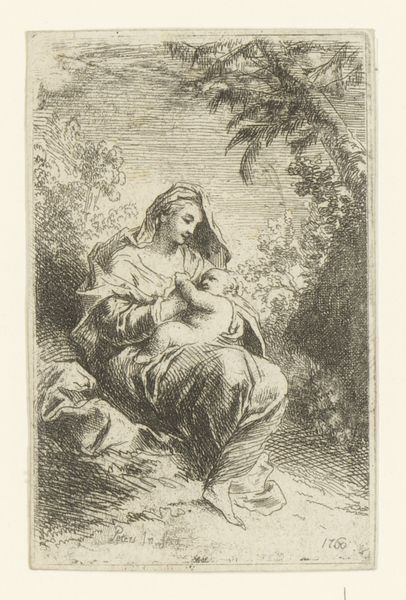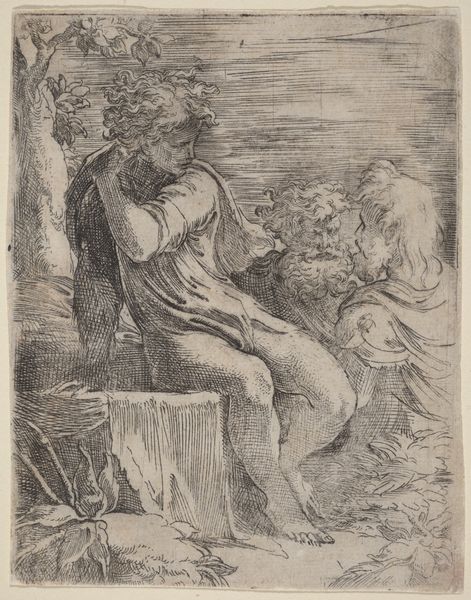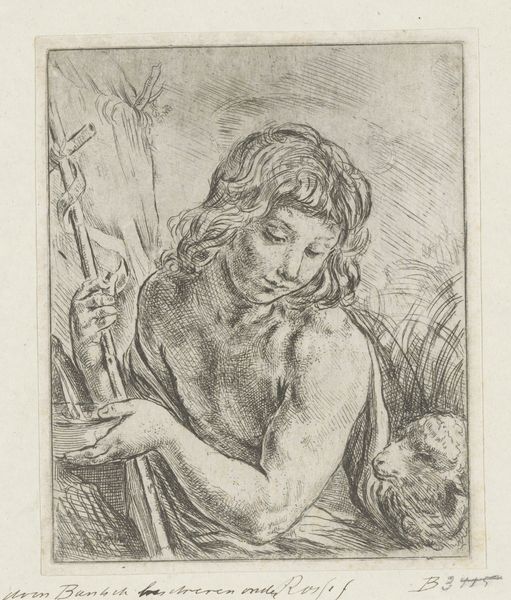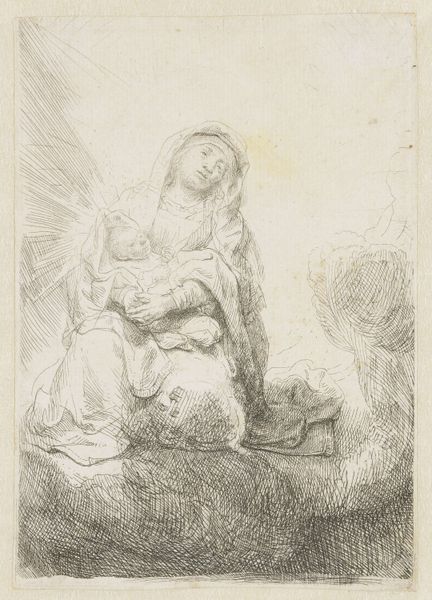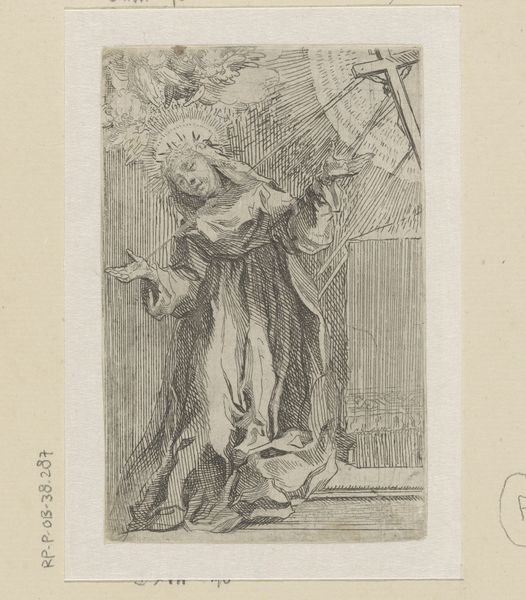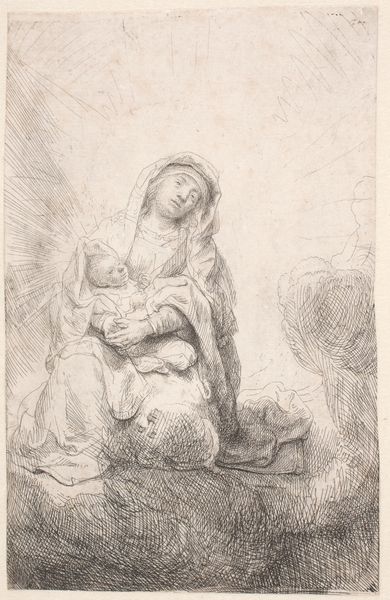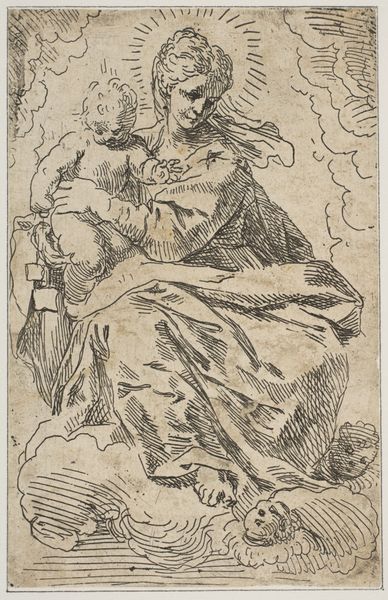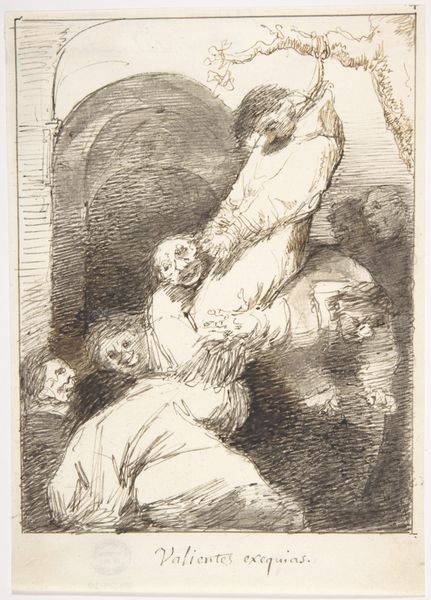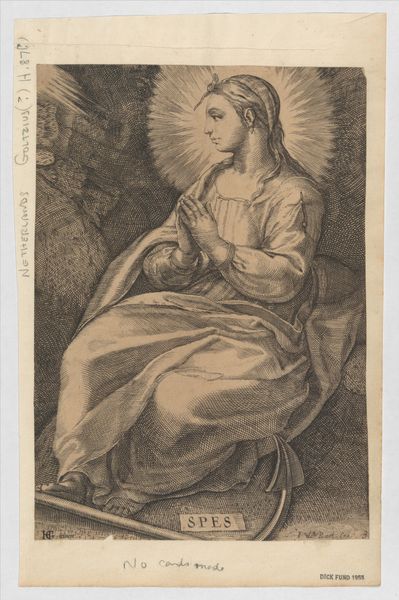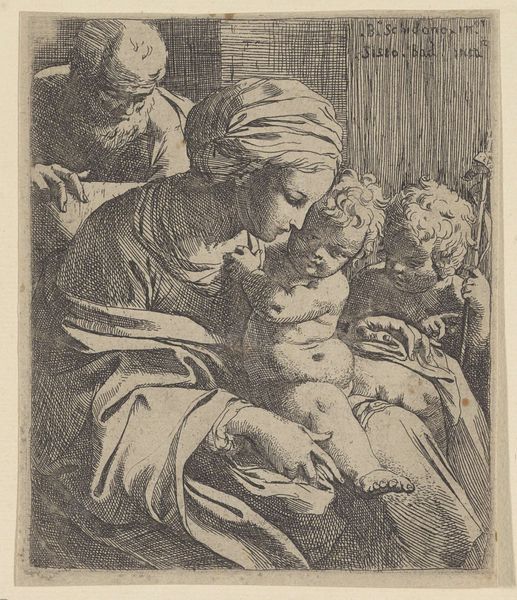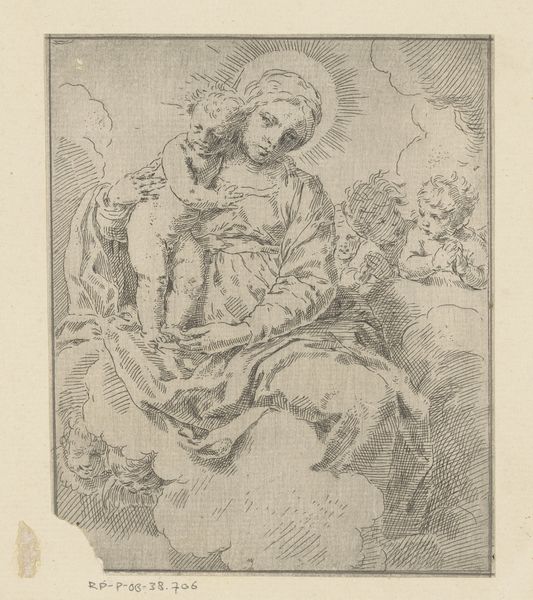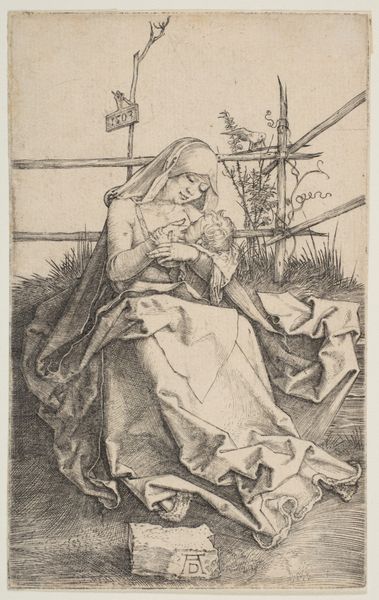
drawing, print, ink, engraving
#
portrait
#
drawing
#
baroque
# print
#
pen illustration
#
pen sketch
#
pencil sketch
#
old engraving style
#
vanitas
#
ink
#
pen-ink sketch
#
pen work
#
sketchbook drawing
#
history-painting
#
engraving
Dimensions: height 117 mm, width 92 mm
Copyright: Rijks Museum: Open Domain
Curator: Immediately, the image gives the impression of being very subdued and intimate; Mary Magdalene gazes down, holding a cross, with what appears to be a skull resting next to her. Editor: Yes, a potent visual contrast! This is an engraving depicting Heilige Maria Magdalena, or Saint Mary Magdalene, currently held in the Rijksmuseum. The engraving technique adds to the vanitas thematics here. Curator: You're right about that; looking closely, you see how the delicate use of line work emphasizes the textures of her hair and garments, even highlighting the smoothness of the skull. Given this being a print, I find it necessary to wonder about the role that the mass production and consumption of this image played at the time. Editor: Good question. During the late 16th and 17th centuries, engravings and prints of religious figures allowed for broader distribution of such imagery, thereby expanding devotional practices outside of the Church walls. The image then becomes a more democratic art object. Curator: Certainly. The widespread availability also had the potential to normalize the visual iconography – Magdalene's humility becomes somewhat standardized in the domestic sphere through readily available reproductions of the image. I'm curious as to the studio practices required for production; was the image traced from another image, printed onto the plates for consistency and quality of line, and who did the labor for the printing of multiple versions of this drawing? Editor: Absolutely; by depicting Magdalene in this pensive state, holding a cross, perhaps leaning towards death – symbolized by the skull– the piece asks the viewer to contemplate their own mortality and relationship to faith and forgiveness within shifting social and political religious movements. Its purpose, beyond simple decoration, lay in spiritual guidance. Curator: Right, the context frames the meaning significantly; viewing it today we can appreciate the composition and linework, but for its intended audience, its didactic potential held considerably more significance. Editor: Indeed. Understanding how artwork like this functioned within society is key to unlocking its multilayered meanings for contemporary audiences. Curator: For sure! I wonder, what implications does this image have on labor in artistic workshops and the accessibility of religious art? Editor: Good point! Thinking through the social implications of art is what ultimately keeps things fresh for viewers in every new generation.
Comments
No comments
Be the first to comment and join the conversation on the ultimate creative platform.
